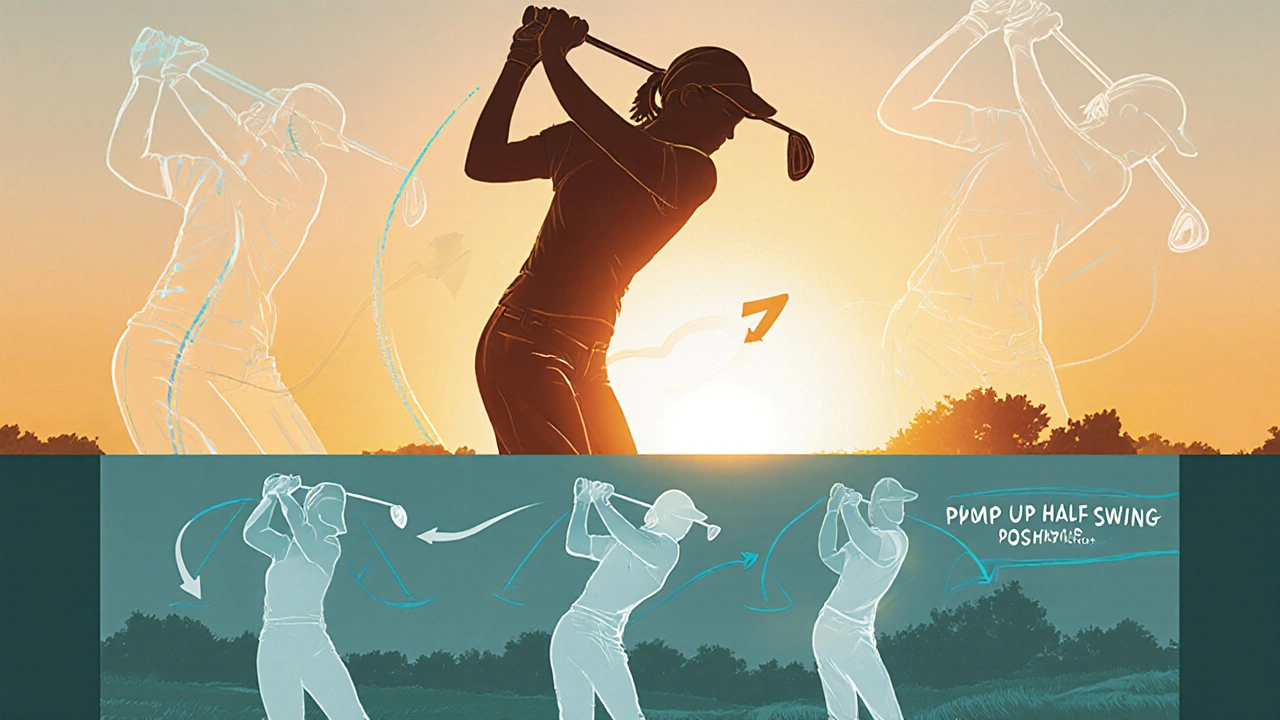Why Golf Feels So Hard - Understanding the Main Challenges

Golf Difficulty Calculator
How Many Strokes Are You Losing?
Answer these questions about your recent round to identify where golf feels hardest for you
Golf is often called a "gentleman's game," but anyone who has swung a club knows it can feel brutally unforgiving. Whether you’re stuck in the rough, missing a short putt, or battling your own nerves, the sport throws a mix of physical, technical, and mental hurdles at every level. This guide breaks down exactly why golf difficulty feels so intense and offers practical ways to tame the most common pain points.
Key Takeaways
- Mastering the Golf swing requires precise timing, body mechanics, and consistency.
- The Short game (chipping, pitching, putting) accounts for roughly 60% of your score.
- Course design - hazards, elevation changes, and green speed - adds a strategic layer that many beginners underestimate.
- Mental resilience and routine are as vital as physical practice.
- Proper equipment fitting, especially Golf clubs, can shave strokes off your round.
Physical Mechanics: The Core of the Golf Swing
The Golf swing looks simple - grip, backswing, downswing, impact, follow‑through. In reality, it is a coordinated dance of hips, spine, wrists, and shoulders. Beginners often make three classic mistakes:
- Over‑gripping: squeezing the club too hard restricts wrist hinge and kills clubhead speed.
- Early arm extension: letting the arms straighten before the hips have turned leads to a steep swing path and slices.
- Lack of tempo: a rushed downswing creates tension, causing the clubface to open or close unexpectedly.
Fixing these issues starts with drills. The "pause at the top" drill forces you to feel the momentary stillness before the downswing, encouraging a smoother transition. Another effective drill is the "pump‑up" - repeat half‑swings while keeping the lower body quiet, which reinforces proper sequencing.
Short Game: The Score‑Saving Engine
Even the best long‑iron players will falter if the Short game is weak. Chipping, pitching, and putting demand different technique sets:
- Chipping: Use a slightly open clubface, keep the weight forward, and let the ball roll out of the bottom of the swing.
- Pitching: Favor higher lofted clubs (e.g., 56‑degree wedge), maintain a smooth rhythm, and focus on a clean strike to control spin.
- Putting: Aim for a pendulum motion, keep eyes over the ball, and adopt a consistent pre‑putt routine.
Practice routines that simulate on‑course scenarios - set up a three‑foot chip, a ten‑foot pitch, and a 20‑foot putt in a single session. This builds muscle memory for the three distinct swing lengths you’ll need under pressure.

Course Architecture: Why Layout Adds to the Challenge
A Golf course is a living puzzle. Even an otherwise perfect swing can be neutralized by slope, wind, or strategic hazard placement.
- Terrain: Hills can change effective loft, making a well‑timed shot fly too low or too high.
- Hazards: Bunkers, water, and out‑of‑bounds force you to shape shots and choose risk‑reward strategies.
- Green speed: Modern greens are often trimmed to a Stimpmeter reading of 10-12 ft, demanding precise speed control on putts.
Learning to read a course is a skill in itself. Walk the fairway before teeing off: note the grain direction of the rough, spot the slope of the landing area, and visualize where the ball will roll after impact. This mental rehearsal saves strokes more often than a perfect swing.
Mental Game: The Hidden Weight on the Bag
Stress, self‑doubt, and over‑analysis are the silent culprits behind many high scores. The mental side of Golf can be trained just like any physical skill.
- Routine: Develop a three‑step pre‑shot ritual - club selection, alignment check, and a deep breath. Consistency in routine reduces anxiety.
- Positive self‑talk: Replace "I always miss" with "I hit the last three fairways" to reinforce confidence.
- Visualization: Before each swing, picture the ball’s flight path and landing spot. This mental picture locks in a clear target.
A simple mindfulness exercise - focus on the feeling of the club in your hands for 30 seconds before each hole - has been shown to lower heart rate and improve focus.
Equipment Fit: When Clubs Become Your Ally
Even the best swing can be sabotaged by ill‑fitting Golf clubs. Key fitting factors include:
- Length: Too long forces you to reach; too short compresses your swing arc.
- Lie angle: Determines how the clubhead contacts the ground; mismatch leads to a slice or hook.
- Shaft flex: A stiffer shaft suits faster swing speeds; a softer shaft helps slower players generate more distance.
Most reputable pro shops offer a 7‑day fitting trial. Bring a friend, swing a few clubs, and record ball flight data. Small adjustments (like a 0.5‑inch length change) can translate to a whole‑stroke improvement.

Handicap System: Understanding Your Progress
The Handicap system is not just a number; it’s a feedback loop. A lower handicap signals consistent ball‑striking, while spikes indicate swing or mental lapses.
- Track scores on each nine‑hole round.
- Calculate the differential using the course rating and slope.
- Average the best 8 of the last 20 differentials - that’s your official handicap.
If your handicap swings dramatically, review recent practice logs. A sudden drop often matches a new swing change, while a rise could point to fatigue or over‑practice.
Putting It All Together: A Practice Blueprint
To tackle why golf is so hard, you need a balanced practice schedule that hits every challenge head‑on. A typical week might look like this:
- Monday - Swing fundamentals (45 min): grip drills, slow‑motion backswing, video analysis.
- Wednesday - Short game circuit (60 min): 50 chips, 30 pitch shots, 30 putts from varying distances.
- Friday - On‑course strategy (18 holes): Play a “play‑safe” round, focusing on club selection and hazard avoidance.
- Saturday - Mental work (30 min): visualization, breathing exercises, pre‑shot routine rehearsal.
- Sunday - Rest or light activity: stretch, walk, or play a different sport to prevent burnout.
Stick to the plan for at least six weeks, then reassess your scores. You’ll likely see a steady drop in strokes, proving that the difficulty was more about systematic gaps than innate talent.
| Aspect | Mistake | Correct Technique |
|---|---|---|
| Grip | Too tight, limiting wrist hinge | Light hold, “two‑finger” feel |
| Hip Turn | Early arm extension before hips rotate | Lead with hips, then let arms follow |
| Putting Stroke | Jab‑like push, eyes off line | Pendulum motion, eyes over ball |
| Club Length | Using off‑the‑shelf length | Custom fit to height and swing radius |
Frequently Asked Questions
Why do I keep slicing the ball?
A slice usually means an open clubface at impact combined with an outside‑in swing path. Check your grip (make it slightly stronger) and focus on delivering the club on an inside‑to‑outside path by starting the downswing with your hips.
How much practice is enough for a beginner?
Aim for 3-4 short sessions per week rather than one marathon practice. Consistency beats volume because neural pathways reinforce better with frequent, focused repetitions.
Do I really need a professional club fitting?
Yes, especially if you’re serious about lowering scores. A club that matches your swing speed, height, and lie angle can add 5-10 yards per shot and reduce side‑spin, making the ball straighter.
What mental tricks help on the final holes?
Focus on one shot at a time, breathe, and repeat your pre‑shot routine. Visualize a successful outcome for each shot rather than the overall round score.
How does the handicap reflect my real ability?
Handicap averages the best adjusted scores over several rounds, smoothing out one‑off bad days. A stable or decreasing handicap shows genuine improvement, while large swings indicate inconsistency.
Golf will always have a learning curve, but understanding the why behind each hurdle turns frustration into a roadmap. By refining swing mechanics, sharpening the short game, mastering course strategy, training your mind, and using properly fitted clubs, the sport becomes less of a mystery and more of a challenge you can conquer.

